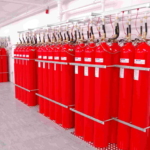
Dust exposure is an issue for most construction workers and companies. Due to the dangers resulting from dust inhalation; employers and workers must be aware of where it might come from and take action to remove dust from air in their workplace. While employers are obliged to educate and protect their employees from health hazards, many workers are surprised to learn of the dangers they’re exposed to during construction. To avoid exposing workers to occupational dangers, here are reasons why construction companies should implement dust control measures in the worksite.
Toxic dust comes in several forms:
Chemical dust like pesticides, chemicals, and even paint can harm the lungs. Also, there’s metallic dust that if processed, tiny bits of lead, cadmium, aluminum and other metals are discharged into the air, slowly poisoning workers. When exposed to an open flame, this dust can also become extremely combustible. But to prevent this, there are various tools and machines from bosstek.com that you can use to control dust and its adverse effects.
Long-term exposure to vegetable dust when handling wheat, flour, wood, cotton, tea, cereals, and other organic goods may not sound dangerous, but it can cause irreversible harm. Dust accumulated during sugar processing has been known to be highly flammable and has been involved in several unfortunate workplace harmful occurrences. Also, molds and spores are especially deadly because they can grow in unexpected places, putting unprepared employees at health risks.
Brain Damage
Overexposure to dust can cause serious health problems, including brain damage. Inhaling tiny, respirable dust particles frequently has been linked to dementia and an increased risk of strokes, that’s according to studies. While there is no definitive link between dust exposure and brain health, the study found that brains that were less exposed to dust were in better shape.
Respiratory Diseases
Dust exposure can induce breathing difficulties, which can lead to life-threatening respiratory infections. Respirable dust consists of fine dust particles that are easily absorbed into the nose and throat. These can then build up and obstruct airflow in the lungs, resulting in chest obstructions. Pneumonia and asthma can be brought about by dust exposure.
As such, certain dust particles are more harmful than others; for example, dust from grain, wheat, wood, and reactive colors can cause coughing fits, wheezing, and chest constriction. Occupational asthma is debilitating, but pneumonia is caused by a build-up of dust in the lungs and infection can be lethal.
The most serious health risk linked to workplace dust is a lung disease. Silicosis and lung cancer can both be caused by excessive exposure to respirable crystalline silica (RCS). The long-term effects of dust exposure on the lungs are, unfortunately, incurable. Employers must put their employees’ health first and keep dust levels to a bare minimum.
Fire Hazards
Dust explosions are real and their effects are unimaginable. Long-term accumulation of dust can lead to fire hazards. But by using industrial vacuum cleaners you can lower the amount of flammable powder floating in the air. This not only reduces the risk of dust explosions, but also improves the breathing environment for workers, reduces slip hazards, and even prevents back injuries caused by cleaning heavy dust.
Dust control is an important health and safety measure that should be practiced to protect employees. Failure to do so can lead to adverse effects such as fires and long-term diseases











